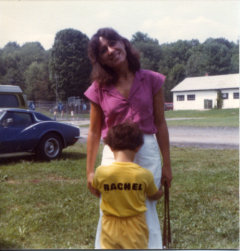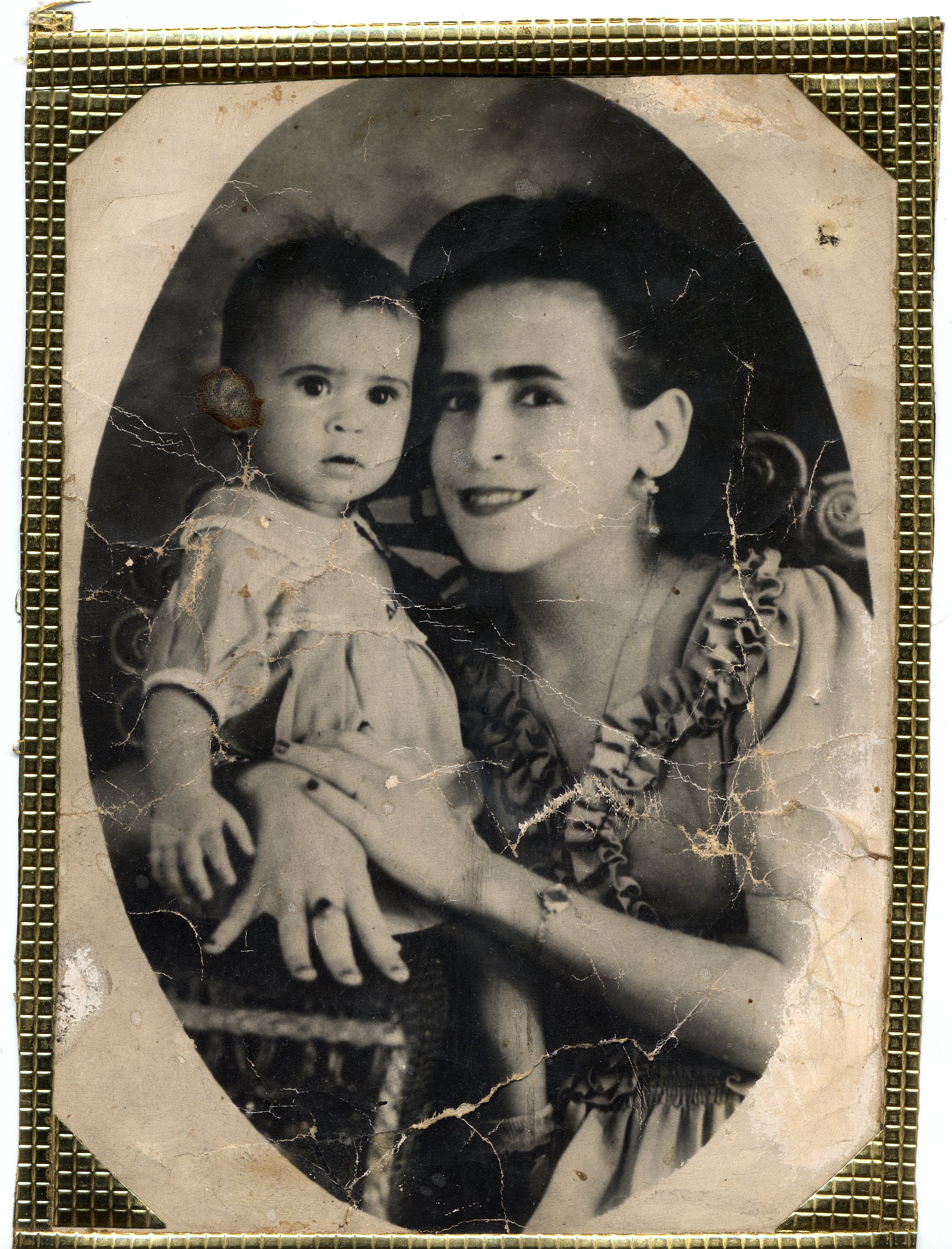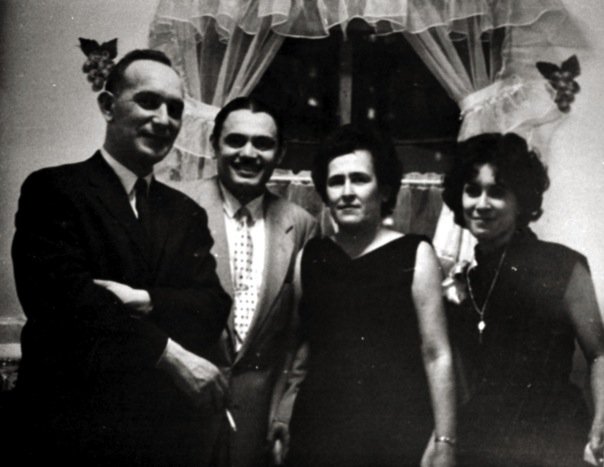Yesterday would have been my mother’s 66th birthday. She didn’t make it to her 55th though; she died of ovarian cancer. The tumor was the size of a grapefruit when it was discovered, three weeks before my college graduation. The doctors said that she probably wouldn’t live four months, but that was only because they didn’t (yet) know her strength. She fought through surgery, chemo, a stem cell bone marrow transplant, and more chemo. She battled cancer for three years before she eventually passed away.
When she died it wasn’t the furniture or new cars my brothers and I argued over, it was the family photo albums. We each got a stack of albums, mostly filled with photos from the time period we most treasure. Certain photographs of ourselves with Mom and Dad, that “belonged” in a book claimed by another sibling were carefully peeled and relocated to one of our own books. I’ve moved across the country every few years – east, west, midwest, and south – hauling heavy boxes of albums and loose photographs with me; I did a lot of peeling/stealing from other albums.
My favorite photograph, taken in 1979, shows me in my yellow Bronx zoo t-shirt, my back to my father, who was behind the camera. He was almost always behind the camera, shouting directives (I know now, that I get that skill from him.) This photograph shows me at age 5, my face burrowed into my mother. She hated to be photographed but always beamed on command for Dad’s snapshot. Her hair was bone straight naturally, but this was during her days of perm, looking like Carla from Cheers. She carried a 15 pound purse, always in her left hand. All you can see in this image are the straps, but I know what they held – lipstick, powder, wads of tissues, a small brown Coach change purse (with a $20 bill stashed inside for safety), safety pins, a baggie of snacks like cashews or carrots, a baggie with Tylenol, Sudafed, and anything else anyone might ever need. This is a classic family photograph – Mom’s big hair and big smile and me grumpy and frowning, hiding my face so that only Mom could see.
My other favorite photograph was taken in 1944, when my Mom was just a baby. My grandmother (who I think I most resemble), also had a beautiful smile and the dark eyes I inherited and passed down to my own children. I know that I have a baby picture of myself, hair sticking straight up, just like my Mom’s does here. She used to complain about the cowlick in front – it was always cause of untamed hair in the front.
The tacky gold “frame” was a specialty of my abuelo. He loved loud, shiny things. I have photos of him wearing black and white striped NY versions of the zoot suite. He always wrapped the edges of photographs with this gold foil. I don’t remember my abuelo, he died when I was just two, so I all I have are whispers of what was, what could of been, and what should have been.
My family hid tremendous family secrets; I know now that most families do. They are like ghosts that hover invisibly but are always present, whether or not you understand them. For years, I asked my mother (who was Puerto Rican and 19 years younger than my white, Jewish father) why she wore a wedding ring, and my father did not. She simply said, we don’t talk about those things in this house. I was always full of questions that always got that same answer.
When I asked her how she met my Dad, she said simply, we don’t talk about those things in this house. When I asked her why she loved my Dad, she would stare silently and most often walk away. When I asked for help making a family tree for school, she’d only point to her few living relatives – her sister, brother, baby sister and my cousins, and would then swiftly move around, usually to go clean something. When I asked her about her wedding, she said even more quietly, we don’t talk about those things in this house.
My father was also diagnosed with cancer, two weeks after my mother, and died two months before she did. After he died, my brothers and I rented a dumpster and started digging out 40 years worth of stuff from the basement. I found an old, yellowing white photo album and ran upstairs screaming, “look what I found!” When my Mom laid eyes on that photo album, she said simply, burn it!
I hid the album, full of photographs of my parent’s “wedding,” it was more of just a reception. I learned later they got married at City Hall and had a “party” where these photos were taken. I ran upstairs, hid it, and didn’t bring it back out again until she died.
My brothers, who are 9 and 11 years older than I, made a deal. They took this album to share with each other, but I wasn’t allowed to bring it home. I think that for most of my life they just saw me as a little girl, and in many ways still do. During one visit to my oldest brother’s house years ago, I filmed the album from cover to cover.
In my digital storytelling course, “We Media: Digital Stories of Race, Class and Gender,” taught last May at the University of Alabama, I asked my students to select a photograph that was meaningful to them, to do a photo exercise, a writing prompt to get them thinking deeply and creatively. For many of them, the writing from this exercise is revised into their voice-over narration. I ask them to bring an image that “makes you think and makes you feel.” I then give the following prompts:
1 – Describe this image. Use adjectives, short words or phrases to describe the image.
2 – What do you see in this image? List the physical objects, use details. What’s in the background? Look closely at the image.
3 – What is the story in this photo? This photograph tells the story of…
4 – What is the story of or behind this image? Who took the photograph? Where did you get it? Where do you keep it? Is it on display on the mantel or your night table, or do you keep it hidden away?
5 – How does this image make you feel? When I look at this image I feel… When I look at this image I think about…
During the exercise, I usually do it myself. I use an image that is meaningful to me, and jot down notes while my students write. Once I used the image above (yellow, Bronx zoo t-shirt), and this time I used this photograph that I downloaded from my brother’s facebook wall:
Usually I just use my writing, revised into a one to two page voiceover narration as a demo (I like to model creative assignments for my students), and use this material to teach them to edit with final cut pro but, I never actually finish the digital stories. I edited a “rough cut” (a work-in-progress) this time, and some of the students cried. But still, I couldn’t finish it.
But later in the summer, teaching 3 more sections of digital storytelling for the summer bridge to academic excellence program at the University of Minnesota, I did. I shared my finished digital story with my students, after they screened their final videos, as an act of reciprocity – it takes a lot to share your story in public space, particularly on a public blog.
Sharing family stories, particularly the “secrets” and hidden histories, like I do in this video, are exposing. It hurts me to tell them. And I know that there are folks in my family that I love very much, who have expressed hate for me, specifically because of my truths (they disagree about the way my Mom feels about her marriage), and why and how I share these “lies.: But, I think that it hurts me more not to tell. I know my Mom would be proud.
I think that my mother internalized and carried so much of her pain in silence and those repeated dismissals at my every question. I think that not talking about her truths, her life, her struggles, even to her own children was a weight she carried. I think that she died with most of her dreams unfulfilled. She repeatedly told me that she wanted to be a stewardess (that’s what they called flight attendants back in the back), so that she could get disabled access holidays for my father and see the world. She did fight my father tooth and nail to go back to college and get a nursing degree. She loved being a nurse, helping folks, and thankfully she did get to go on a couple global trips, but not as a young, single woman. I think, honestly, that she got so sick and suffered so greatly because of the pain that she carried around inside. Pain can eat you from the inside out.
Inspired by my mentor’s memoir ghostbox, and his courage to create his own digital story about his past, I’ve been (slowly) editing short videos, digital stories, to sort through these memories, my history, my pain and my truths. Here’s my first entry: ghostbox#1: killer cancer cells.
I’ve realized that when it comes to the past, there is no truth. One person’s “fact” may have been a half-truth or straight lie told by one family member to another. The Truth is not the point. The point for me, is to know where I come from, to help navigate where I am and where I’m headed, and so that my own children won’t have to learn about my life from a box of old, yellowed photographs.
~ ~ ~ ~ ~ ~ ~
If you are interested in the pedagogy of digital storytelling on the college classroom, check out this article and video.
If you have the resources, study with me or take a digital storytelling workshop with Joe Lambert and the Center for Digital Storytelling. They do amazing work!




Wow! This is so incredibly moving. Thank you for sharing your story, for being so vulnerable. Just yesterday, I was discussing with another CF the very thing you mentioned: how my family doesn’t talk about secrets, which causes me to eagerly tune in at all family functions for the few stories that will be told. Generally, my mother simply says, “those things happened in the past, and you don’t need to know about them now. They are none of your business.”
Under my coffee table, I have a picture that I took with my grandmother when I was about 20. I’ve been meaning to bring it to the office, because it is the only one of me and her, and the only one I ever remember her agreeing to pose for. She died in 2008, while I was in the middle of writing my dissertation. I didn’t have a whole lot of time to mourn, and I’ve been intentionally allowing myself that opportunity since I graduated and started working. And frequently, when I have pangs of missing her, I am reminded of a story that she told me about her own grandmother, when I was a young girl, sitting on the porch, listening. She said a few things, but mostly I remember her saying that she still missed her grandmother. And I wondered how it was possible to miss someone who had been gone probably at least 40 or 50 years. Now I know that 40 or 50 years from now, I’ll still be missing her. And because of her story, I know that’s okay. Again, I truly thank you for sharing.
Thank you so much for sharing your truth. This is absolutely beautiful. I’ve done similar photo exercises in creative writing classes, and I’m always wondering about some of the same issues with truth and vulnerability that you write about. The coupling of the story and the images is so powerful. I would love to take a class or workshop with you some day. Thank you again.
Simply beautiful.
That’s beautiful. The family photos of our loved ones truly become a doorway to remembering them when they’re gone. I hope you’ve scanned your images as well so you have back-up copies.
Sounds like a great college class you taught. It reminds me of a gal I met recently who helps people write their stories (either their own, or those of their loved ones).
this is/you are so absolutely beautiful!
your bravery and resilience,
in telling your story,
in your own words,
and interrogating your personal truth,
is an inspiration.
our her-stories and histories are deeply important in the search for self-actualization–and you have written out, what my mentor h.l. goodall calls, a “narrative inheritance” for your children. undoubtedly your mother is proud! and i am simply in awe (of you).
thank you for sharing your story!